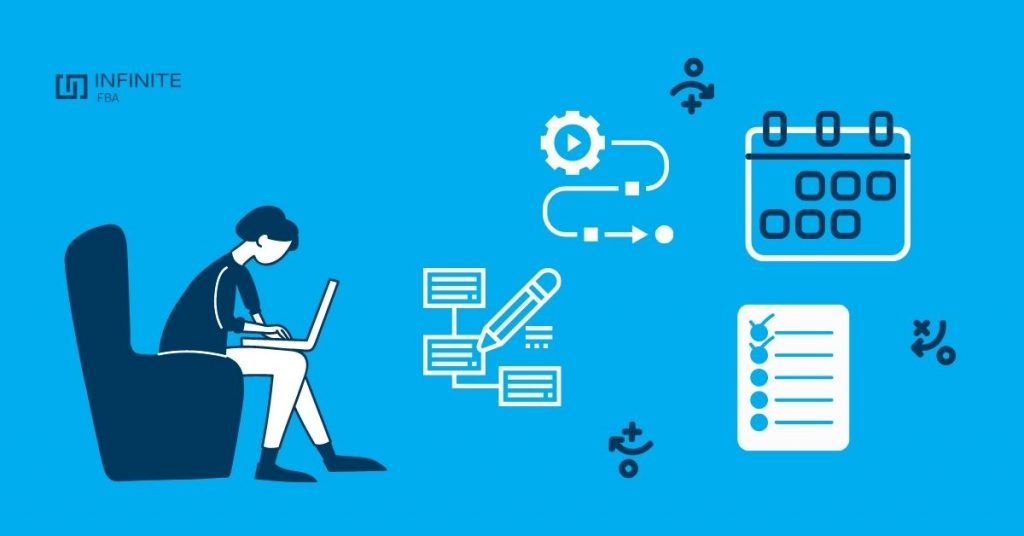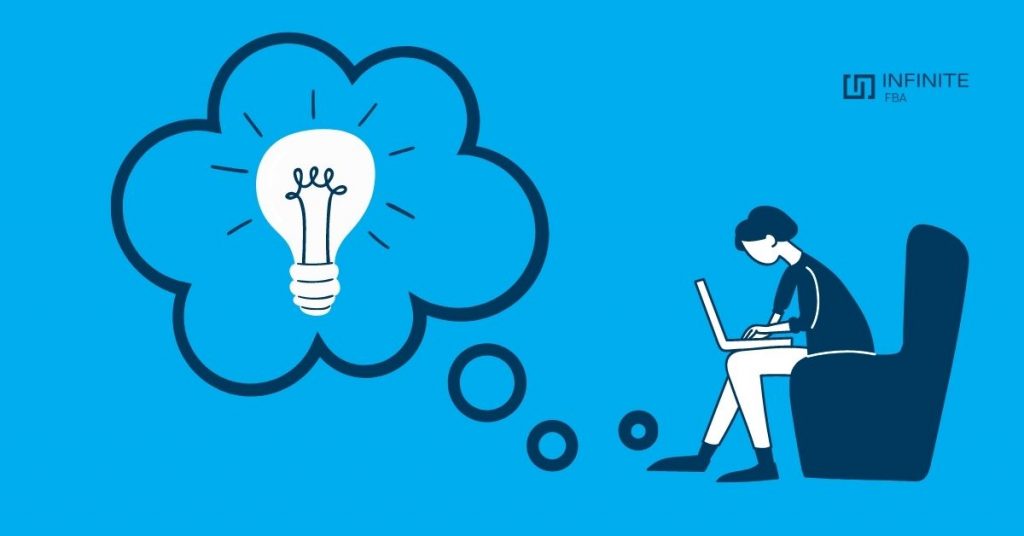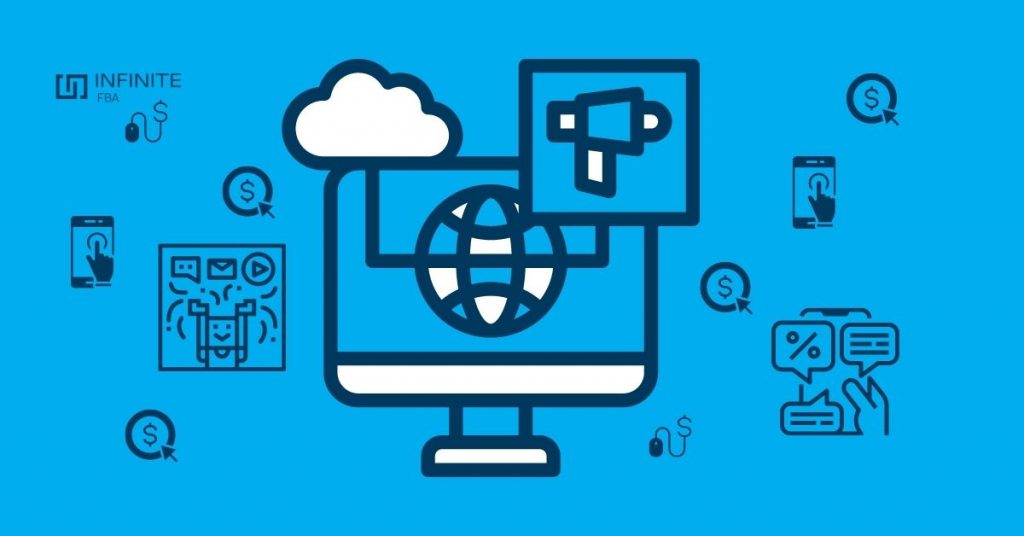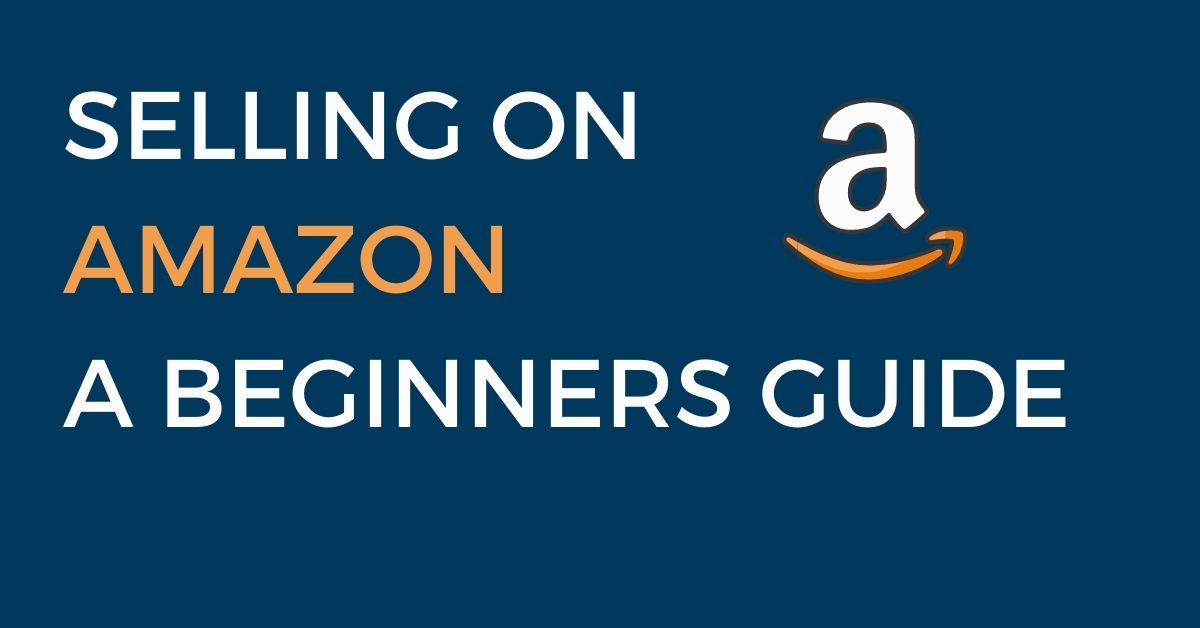Got a product to sell? Amazon is one of the most popular online marketplaces globally and a great place to make some profits selling– especially through Amazon FBA (Fulfillment by Amazon).
While brick and mortar retail will always have traction in major industries, online selling has become increasingly popular over recent years. As more and more online marketplaces begin selling and thriving, the industry looks ahead towards may more years of growth.
If you have an interest in selling on Amazon as a beginner, now’s the time to act on it. Amazon sellers around the world are making enough on the profits from their Amazon selling every day to leave their jobs, travel the world, and grow profitable Amazon businesses.
Below, we’re making it as easy as possible for you to get in on the ground floor with the Amazon Sell Central so you can sell on Amazon and reap the benefits. From planning and niche selection to inventory management and PPC ads, we’re covering all the nitty-gritty details you need to start Amazon FBA.
How to Sell on Amazon for Beginners in 2025
There has never been a better time to start selling on Amazon, have a read through out tutorial where we break down step by step the on how to sell on amazon for beginners.
What is Amazon FBA
Amazon FBA or the Fulfillment by Amazon program (FBA) is essential a fulfilment service sellers can use to remove the headaches of having to deal with the physical products and logistics. Amazon will hold your inventory and products in their own fulfillment centers. They the pick, pack and ship your products to customer who purchase thorough the Amazon marketplace.
How much does it cost to sell on Amazon?
I think this point should be cleared up straight away, as many YouTube videos will make high claims of being able to start out for $X,XXX. Realistically how much money you need to start selling on Amazon will vary, but without $10k+ we feel there are other business models that are a better fit. Find out how much it costs to sell on Amazon FBA here.
Plan
Before any selling action starts, you want to take the appropriate time to plan out your business idea and ensure all of your legal requirements are met. This small bit of forethought and planning can save you time and energy down the road and avoid unnecessary hiccups once you’re consistently selling.

Creating a solid business plan will help steer your business initiatives in the right direction as you embark on Seller Amazon Central. Your business plan should include some (or all) of the following aspects of selling:
- Executive summary – Describe your company and it’s goals.
- Market analysis – Create space for the research that is to come in the following steps.
- Product line – What are you planning to sell? Get into as much detail as you can.
- Financial projections – Do some of the math to see how much it will take to get started and what your financial goals are for your first quarter or year.
- Sales strategy – How are you planning to get people to buy your products on Amazon?
- Operations – How will your business be managed and run every day? What about customer service?
Use the complete Amazon FBA checklist to get you started.
Another important planning step before becoming an Amazon FBA seller is setting up a formal business entity. Creating a company LLC, sole proprietorship, or corporation is a good idea for protection, just in case, there’s an issue with your product on Amazon as you begin selling products to scale. Register your company with the state where you live and keep all of your business records up to date and accurate and you’ll have nothing to worry about.
Heres a list of the pros and cons of selling on Amazon FBA for those who are starting out or plan to sell on amazon as an individual.
Niche Selection
One of the most important parts of creating a successful Amazon com selling account is doing product research beforehand to select the right niche for you. If you try to hit the ground running on the Amazon selling center, there’s no guarantee that you’ll have success. In fact, most sellers fail in part because of bad product research.
The idea of good product research is to find a niche and then a product within that niche that you can secure for a lower price and then start selling at a higher rate to earn a profit through your Amazon business.
Here are some things you’ll want to look for as you conduct your niche and product research:
- Affordable inventory with high selling price
- Increasing demand for the niche/private label products
- Little to no competition (Amazon com has a large bandwidth of sellers, so too many competitors may drown you out.)
- Profitable products
- Belief in the niche and product
Once you’ve done this research, you can carefully select your niche or product categories. Select your niche by searching for specific keywords throughout different marketplaces to get a list of products that have high demand but somewhat low or moderate supply. Finding that open opportunity is the sweet spot for Amazon FBA success. There is no easier way to get started than by taking a course on Amazon FBA to show your exactly step by step the overall process.
Market Research
With your niche selected, you can now perform some in-depth market research on the marketplace you’ve chosen in the previous step. Here are a few things you’ll want to look into:

Creating Your Brand
First, you’ll want to look into how other successful Amazon seller created their own brand. Did the brand owners private label a product with their brand name and create a fresh and new product to sell? Maybe they just found a way to reposition an old product in the market and start selling as a fresh brand. Take note of the Amazon seller account and brand owners that have high customer ratings and lots of customer reviews, as this indicates high sales volume and positive feedback.
Branding
Next, you’ll want to consider your branding itself. Branding is quite different from the brand – but do you know why? Your brand is the values, messaging, reputation, and perspective of your company and products. Your branding, on the other hand, is the collection of assets (logos, headings, graphics, sales copy, etc) used to present your brand to potential customers. Jungle Scout for example uses the orange branding much the same as Amazon to try and link the two together. Creating these assets ahead of time will save you time long term and establish a strong presence for your upcoming product categories once you’re selling.
Competitive Analysis
The final step in your market research stage should be a competitive analysis, called a SWOT analysis. SWOT stands for strengths, weaknesses, opportunities, and threats. Begin by outlining what strengths your brand has. These are the internal advantages you have going for your Amazon product. Next, go over any weaknesses, or internal faults that may challenge your success. After that, move onto the opportunities. Opportunities are external factors that position you well in the marketplace. Finally, list any threats that may be present. These are external challenges, like strong competitors, high quality listings, robust competitor customer service programs, or market demands.
With this competitive analysis in hand, you’ll have a good idea of the outlook of your sales on Amazon to come.
Suppliers
Known around the world as the best private label supplier of inventory, Alibaba should be your top choice for low-priced products to sell that you can purchase in bulk (less than retail price) and want to sell for more money.
Within Alibaba, you’ll find third party private label suppliers that you’ll need to vet on an individual basis to make sure a high-quality product and timely delivery. At the very least, make sure that they are a Gold-level supplier that accepts a secure method of payment (either Paypal, AliPay, or Trade Assurance) and has been certified onsite by Alibaba. While you may be able to get a better deal from another supplier that doesn’t meet the above requirements, it’s typically not worth the risk of working with uncertified suppliers.
Here’s a quick checklist to follow as you find the best suppliers for your Amazon com business:
- Find relevant products on Alibaba.com.
- Create a small list of verified sellers with a long track record and gold ratings.
- Then, contact each of these suppliers via email regarding the amount you’re looking for.
- Discuss further product detail with the responsive suppliers, ideally over the phone or by email when necessary.
- Set up a sample order in a small amount to test out the product and shipping.
- Pick your favorite product and supplier from the sample options you’ve received to start selling.
Remember that with Alibaba, you can negotiate with your supplier for a better deal. By creating an open line of communication with your supplier from the start, you can increase your odds of securing a low per-product rate. With a lower rate, that means a higher profit margin for you once you’re selling.
Where to Buy Products to Sell on Amazon
As mentioned above finding a quality supplier is key to Amazon FBA. Suppliers in China can easily and quickly be found on Alibaba marketplace. You should also research locally online or in magazines as you will avoid shipping fees and downtime or being out of inventory during Chinese new year etc.
How to Create an Amazon Seller Account
Want to start Amazon FBA? Let’s create a professional seller account so you can get your Amazon business up and running.
Amazon offers two different seller account plans when deciding to sell on Amazon FBA, known as the Individual or Professional account. The individual plan will cost you $.99 per sale, but the professional plan is just $39 99 per month regardless of how much you’re selling.
If you’re selling upwards of 40 items each month, you’re better off to create an Amazon Professional seller account. For the purpose of this article, we’re going to focus on the professional Amazon account.
To get started, you’ll need the following items in order to setup an Amazon business:
- Bank account info
- Credit card
- Government ID
- Tax info
- Contact info
Next, go to Amazon Seller Central. The URL is SellerCentral.Amazon com. Here, Amazon will walk you through all of the steps to successfully set up your Amazon account so you can start to sell on Amazon FBA. Bonus: Download the Amazon seller app to have the data on the go.
Product Listing
With your supplier relationship solid, inventory ready to go and Amazon seller account up and running, you’re ready to create your very first product categories, product listing, and product detail pages. These steps will take you through the entire process:
Add Your Product
First, head to your Seller Central page and click on the inventory drop-down menu item at the top. Select “Add a Product.”
Create a New Listing
Now, go ahead and select “Create new product listing” so you can start with a blank slate of product detail before you begin selling on Amazon.
Choose Your Product Category
From here, you’ll choose the product categories that you’ll be selling in. Make sure the product categories you choose aren’t restricted or gated, otherwise you’ll need to wait for approval before you can create your product detail pages to grow your business. For ease, stick to the categories that don’t need any approval so you can streamline the process and make more headway.
Fill In Required Info
Next, fill in whatever required info they ask for. No need to take a ton of time on this step, just focus on getting your listing up so you can then send your inventory to Amazon for fulfillment by Amazon. You’ll have time to add all the optimized keywords into the product detail pages after your inventory gets to Amazon’s fulfillment center.
Complete Requested Listing Info
It’s time to fill in all the spaces needed to create a new product listing, which will get your Amazon FBA (Fulfillment by Amazon) listing finished. Once your listing is finished, you can get to selling from with your Amazon account! Fill in all of the following product detail:
- Title: The name of your product (can be changed later)
- Manufacturer: If you’re a white label reseller, go ahead and put your own company’s name. If you’re still waiting on your documents for a business name to be official, you can still fill it in here for now.
- Brand: Your company name
- Price: Put your best guess for the price, you can change this later
Buy a UPC Code
If you don’t have one already, you’ll need to buy a UPC code to sell a product on Amazon FBA. Do this via GS1 barcodes if possible.
There, you’ll find an easy link to Amazon UPC codes.
Input UPC Code Into Product ID
Now, open the folder with your new UPC code and write down that number. Then, copy/paste or write in the number in the “Product ID” field within the product listing for your Amazon business. Select “EAN.”
Save and Finish
Want to sell? Below the “Product ID” field, you’ll see a button that says “Save and Finish.” Simply click on this and congratulate yourself for creating your first-ever Amazon com listing to sell products on Amazon.
How to Ship Your Products to Amazon for FBA
Shipping to Amazon FBA warehouses is essential for an Amazon FBA business. In order to gain Amazon prime status you will need to use Amazon or an approved 3PL company. This also ensures you don’t lose the buy box for being out of stock.
How to Sell Your First Item on Amazon
Selling your first product on Amazon is usual just a case of getting your listing live. Amazon does the hard work and has the large pool of customers. You can also use PPC advertising to boost the sales at the beginning.
Inventory Management
As you continue to create a ton of products on Amazon per month, you’ll grow your business and become one of the many successful brand owners on Amazon.
Keep in mind that, in order to maintain your status as one of the profitable Amazon sellers, you’ll need to stay on top of your inventory to ensure orders are getting fulfilled on time every day and that demand is met.
Keep logging onto seller central every day using your Amazon seller account and look for any possible customer service needs that need attending. Amazon has their own inventory management software to make things easy. Using Amazon is the very best way to set up automated inventory management tasks and keep a steady flow of appropriate inventory. In fact, retailers may even see a 40% increase in efficiency when using this Amazon com software.
Here’s what you should keep in mind about proper inventory management when selling on Amazon:
- Understand Your Turnover Rate – Your turnover rate is how fast you sell on Amazon. This will help you regulate your stock levels for fulfillment by Amazon. A good target for third-party sellers is a 3-month window for turnaround.
- Grasp Supply Lead Times – Lead times will impact how long your supply chain takes to get the product to the customer. With a strong grasp of supply lead times, you’ll better manage your inventory and can offer more precise customer service support.
- Plan For Fluctuations – No product will see the same demand consistently all year long. Rather, plan to see some fluctuations while selling on Amazon and make room for that in your inventory schedule.
- Consider Drop-shipping – Dropshipping removes you from the equation and sends your inventory directly to the customer on your behalf after you sell on Amazon. Just ensure the drop-shipper is Amazon com compliant.
- Be Strategic with Promotions – Promotions are great at stoking a demand, but make sure your supply is there to feed it. Otherwise, you may land yourself in a bad spot with angry customers and earn some negative customer reviews.
- Slow Demand When Needed – Just as promotion will pick up demand, you can also slow demand as needed by adjusting the selling price of the item or reducing your advertising spend.
Important: Do not skip on the profit calculations, use an Amazon Calculator which will include selling fees and shipping costs to ensure you are set up for success.
Follow up
After you begin shipping your products out to customers, you’ll want to focus a significant amount of your energy on customer service. Following up with your customers after their package arrives is a great way to ensure they’re happy with the product they received. It also serves as a great opportunity to politely ask them to leave customer reviews on your page to boost your reputation as an Amazon seller.
Read more: Best Amazon Feedback Software Tools.
When a customer receives a damaged product, a product that doesn’t fit the Amazon com product details, or they simply aren’t happy with the reality of the product, it can leave a bad taste in their mouth. If you follow up with them and learn of their dissatisfaction, you still have the chance to make it right. If you simply check off a win with each sale on Amazon and forget about the customers once they purchase, that’s where the trouble really begins. Amazon prime and regular Amazon com customers can be understanding when the brand offers to make it right, but it’s hard to forgive an Amazon business that doesn’t care about you.
Follow up tools to check out:
PPC
Now that you have a flow going with your inventory management and customer followup, it’s a good idea to look into how PPC (Pay Per Click) ads can help when selling on Amazon. PPC ads help people sell on Amazon every day by targeting the visitors who are most likely to purchase the product. The beauty of PPC ads is that, as a member of the Amazon FBA program, you’ll only be paying for the actual clicks your ad gets. That means you never have to pay upfront, and only pay for the actual engagement you get.

The Amazon PPC model utilizes three different types of products that can help you, as a business owner, sell on Amazon through Seller Central: sponsored products, sponsored brands, and product ad displays.
Sponsored products are keyword-targeted ads that allow brands on Seller Central to promote an individual product. Sponsored brands, on the other hand, allow brands to display a custom header along with three items and a brand logo. Finally, product ad displays (PDAs) send shoppers directly to a product details page and target interested buyers.
By outbidding other brands for your PPC keywords and you’ll start to see more business coming in, which will boost your organic rankings and help more interested Amazon buyers find you in the future.
Optimize Your Product Listings
Once your FBA listing is completed and live you should still continue to optimize it. You can split test your main image to see which is the better option. Reverse engineer your competition to update and improve your keywords.
Amazon Advanced Listings, EBC, and A+ Stores
If you’re looking for an edge in private label Amazon business, you can stand out from the crowd through A+ Content, once known as Amazon Enhanced Brand Content (EBC) or Amazon Advanced Listings. New to these terms? Let’s break it down so you understand.
EBC/A+ Content gives sellers the opportunity to add visually rich content into their product description area. Instead of a few paragraphs and bullet points detailing what the product looks like and how it’s used, brands can input images, infographics, diagrams, and more to enhance your overall brand storytelling and marketing. EBC is free, but it may take a while for your content to get approved by Amazon.
Amazon Brand Registry
If you’re serious about selling on Amazon and you want to continue doing this for time to come, you’ll want to get your brand registered through Amazon. This gives you more control over your brand and helps you provide a consistent brand experience for your customers. You’ll be able to search through Amazon listings using keywords, images, or ASIN numbers to find violations of your brand of resellers using your content to sell another product. By identifying and removing infringing accounts or products, you’ll protect the integrity of your true brand. All you need to sign up is a registered trademark for your brand and proof that you are the owner of the trademark rights.
Find out what Amazon brand registry is here.
Further Reading:
- How to sell supplements on Amazon
- How to sell eBooks on Kindle KDP
- How to sell clothes on Amazon
- Best products to sell on Amazon FBA
- How to sell Textbooks on Amazon
Conclusion
There you have it – a step by step guide to sell on Amazon. By following the steps above and taking your time through the process, you’ll have a profitable Amazon FBA business up and running in no time. Happy selling!
FAQ
How much does it cost to sell on Amazon?
You should expect FBA to cost a minimum of $5,000 to start selling on Amazon if not double that.
Is it profitable to sell on Amazon?
Selling on Amazon can be profitable for anyone as long as they conduct proper research beforehand, choose the right niche, and continue to nurture their Amazon brand as time goes on. Without the right kind of focus and dedication, however, some sellers will end up losing money.
Is selling on Amazon worth it?
Selling on Amazon is worth it if you’re willing to put work into it. If you’re looking for something that will be passive, hands-off income, this may not be right for you.






